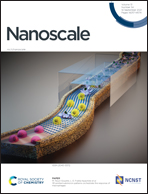Body centered tetragonal nanoparticle superlattices: why and when they form?†
Abstract
Body centered tetragonal (BCT) phases are structural intermediates between body centered cubic (BCC) and face centered cubic (FCC) structures. However, BCC ↔ FCC transitions may or may not involve a stable BCT intermediate. Interestingly, nanoparticle superlattices usually crystallize in BCT structures, but this phase is much less frequent for colloidal crystals of micrometer-sized particles. Two origins have been proposed for the formation of BCT NPSLs: (i) the influence of the substrate on which the nanoparticle superlattice is deposited, and (ii) non-spherical nanoparticle shapes, combined with the fact that different crystal facets have different ligand organizations. Notably, none of these two mechanisms alone is able to explain the set of available experimental observations. In this work, these two hypotheses were independently tested using a recently developed molecular theory for nanoparticle superlattices that explicitly captures the degrees of freedom associated with the ligands on the nanoparticle surface and the crystallization solvent. We show that the presence of a substrate can stabilize the BCT structure for spherical nanoparticles, but only for very specific combinations of parameters. On the other hand, a truncated-octahedron nanoparticle shape strongly stabilizes BCT structures in a wide region of the phase diagram. In the latter case, we show that the stabilization of BCT results from the geometry of the system and it does not require different crystal facets to have different ligand properties, as previously proposed. These results shed light on the mechanisms of BCT stabilization in nanoparticle superlattices and provide guidelines to control its formation.



 Please wait while we load your content...
Please wait while we load your content...